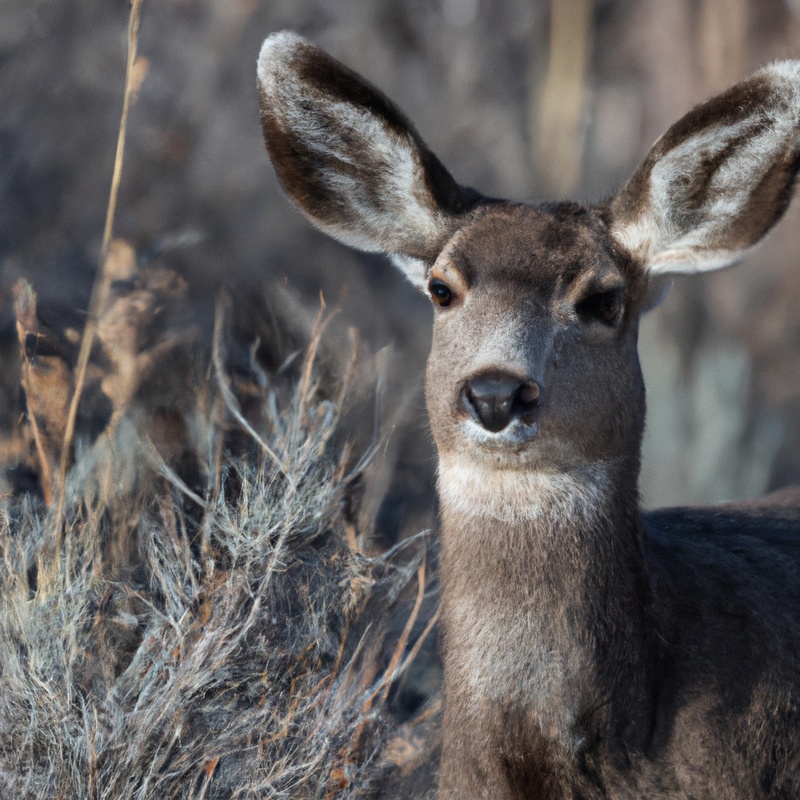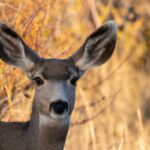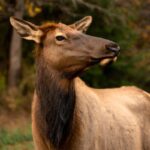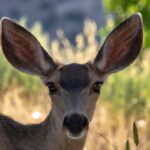Key Takeaways:
- Mule deer hunting in Arizona offers diverse terrain and vast hunting opportunities.
- Hunters are required to obtain tags through a lottery system, making it a highly regulated and controlled hunt.
- Timing is crucial, as mule deer hunting seasons are limited and determined by specific dates each year.
- Successfully hunting mule deer in Arizona requires physical endurance, careful scouting, and proper equipment.
Do you love the thrill of the chase and the excitement of the wilderness?
If so, then you’re in for a treat with mule deer hunting in Arizona.
With its abundant population of majestic mule deer and diverse topography, Arizona has become a hotspot for hunters from all over the world.
From the stunning Kaibab Plateau to Unit 10 and Unit 12A, there are plenty of prime hunting areas to explore.
But hunting mule deer isn’t just about luck; it requires skill and strategy.
In this article, I’ll share tips and techniques to help you succeed, along with information on the hunting season, trophy potential, and more.
So grab your gear and get ready for an adventure of a lifetime in the Arizona wilderness.
| Hunting Mule deer in Arizona | |
|---|---|
| Pros | Cons |
| Abundance of mule deer | Challenging terrain |
| Quality trophy potential | Hot and dry weather conditions |
| Limited hunting pressure | Rigorous physical demands |
| Beautiful landscapes | Difficult tag drawing process |
| Opportunity for spot-and-stalk hunting | Higher non-resident license fees |
| Experienced guides available | Strict hunting regulations |
Why Mule Deer Hunting in Arizona is Popular
Abundance of Mule Deer Population in Arizona
The mule deer population in Arizona is abundant. Their numbers are thriving, thanks to favorable habitat conditions and wildlife conservation efforts.
The diverse landscape of Arizona provides ample food sources, cover, and water for these majestic creatures.
As a result, hunters have a high chance of encountering mule deer during their hunts. The abundance of mule deer in Arizona makes it an attractive location for hunting enthusiasts seeking a rewarding and successful hunt.
Topography and Habitat of Mule Deer in Arizona
The topography of Arizona provides diverse habitats for mule deer. From mountainous regions to arid desert landscapes, these deer have adapted to thrive in various environments.
The rugged terrain offers ample cover and protection, with dense vegetation and rocky outcrops.
Mule deer can be found at different elevations, ranging from low deserts to higher mountainous regions. They are adept at utilizing natural features such as canyons, washes, and hillsides for shelter and food sources.
With an abundance of vegetation and water sources, Arizona’s topography creates prime habitat for mule deer populations.
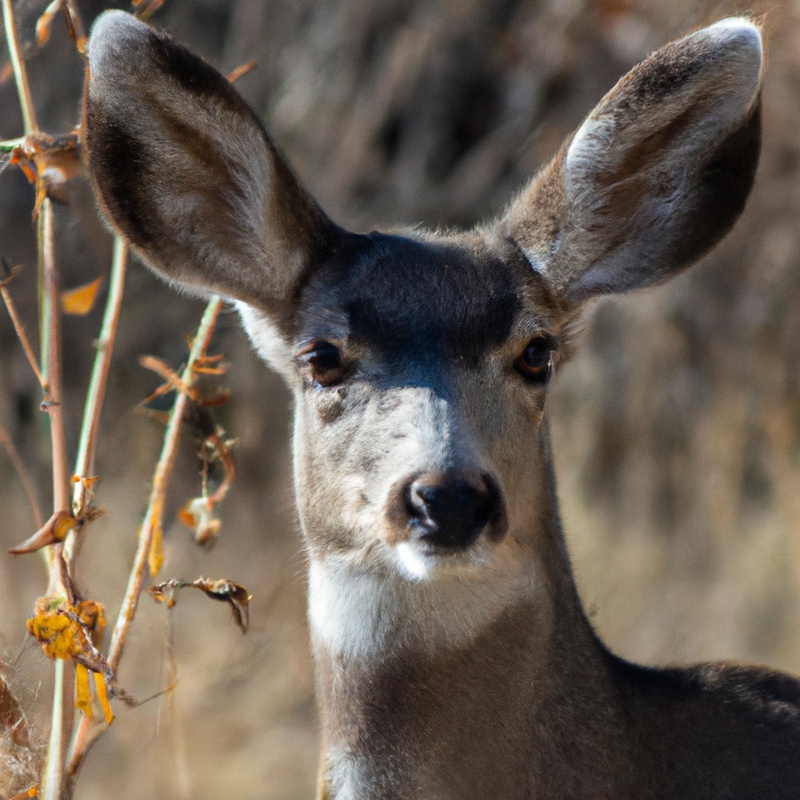
Mule Deer Hunting Season in Arizona
Understanding the Archery Season
Understanding the Archery Season is important for any hunter.
During this time, hunters can use bows and arrows to pursue their prey.
Archery season typically has specific dates and regulations set by the state wildlife agency.
It is essential to check these regulations and obtain the necessary permits and licenses.
Additionally, practicing your archery skills and ensuring you have the appropriate equipment is crucial.
Remember to always prioritize safety and follow ethical hunting practices.
Happy hunting!
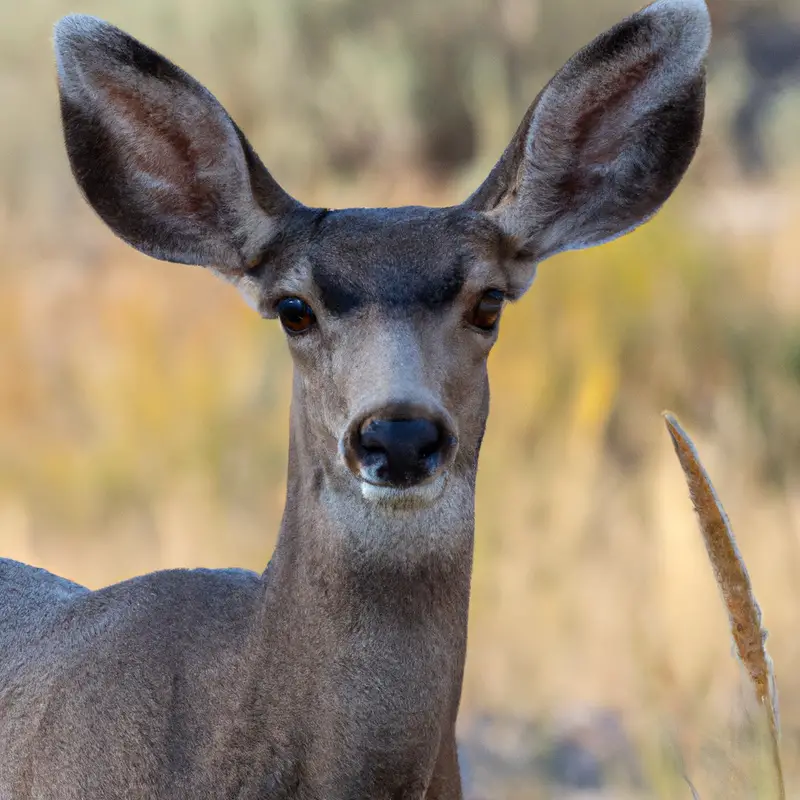
Dates and Regulations for the Rifle Season
During the rifle season for mule deer hunting in Arizona, there are specific dates and regulations to follow.
The exact dates for the rifle season vary each year, so it’s important to check the Arizona Game and Fish Department’s website for the current season dates.
In terms of regulations, hunters must possess a valid hunting license and tag, and they must abide by bag limits and any special area restrictions.
Additionally, there may be restrictions on the type of firearm that can be used.
It’s crucial to familiarize yourself with these regulations to ensure a safe and legal hunting experience.

Best Areas for Mule Deer Hunting in Arizona
Kaibab Plateau
The Kaibab Plateau in Arizona is a prime location for hunting mule deer.
It is known for its large deer population and breathtaking scenery.
The plateau offers a variety of terrain, including forests and open meadows, providing ample opportunities for hunters.
Keep in mind that hunting regulations must be followed, and it’s important to obtain the necessary licenses and permits.
Additionally, being prepared with the right gear and having knowledge of the area will greatly enhance your hunting experience on the Kaibab Plateau.
Unit 10
Unit 10 is a prime location for hunting mule deer in Arizona.
Located in the central part of the state, this unit offers diverse terrain, including mountains, grasslands, and scrub brush, providing excellent cover for deer.
The unit has a healthy deer population, making it a popular choice among hunters.
Additionally, Unit 10 is known for producing trophy-sized bucks, so if you’re looking for a challenging and rewarding hunt, this is the place to be.
Be sure to familiarize yourself with the specific hunting regulations and obtain the necessary permits before heading out.
Unit 12A
Unit 12A is a top-notch hunting area in Arizona for mule deer.
It offers diverse terrain, including rolling hills and dense forests, providing excellent opportunities to spot and stalk deer.
This unit is known for its large deer population and trophy-sized bucks.
You can expect challenging but rewarding hunts in Unit 12A, with a good chance of success.
Make sure to study the unit’s regulations and plan your trip accordingly to make the most of your hunting experience.
Tips and Techniques for Successful Mule Deer Hunting
Scouting and Locating Mule Deer
Scouting and locating mule deer is all about finding their natural habitats and understanding their behavior patterns.
To start, look for areas with ample food sources such as grasses, shrubs, and browse.
Then, focus on locating water sources nearby.
Pay attention to signs like fresh tracks, droppings, and bedding areas.
Additionally, consider time of day and weather conditions for increased chances of spotting mule deer.
A good spotting scope or binoculars can also be helpful tools in scanning the landscape.
Keep in mind that patience and persistence are key when scouting and locating mule deer.
Understanding Mule Deer Behavior
Understanding Mule Deer Behavior is key to successful hunting. Mule deer are mainly crepuscular, which means they are most active during dawn and dusk.
They tend to browse for food in open areas, but are cautious and alert, often retreating to dense cover when they sense danger.
During the rut, bucks become more aggressive and will actively pursue does. Knowing this behavior can help you locate potential hunting spots.
Mule deer have excellent hearing and eyesight, so it’s important to stay downwind and move quietly.
Understanding their behavior helps to anticipate their movements, increasing your chances of a successful hunt. Keep these tips in mind and happy hunting!
Choosing the Right Gear and Equipment
Choosing the right gear and equipment is essential for a successful mule deer hunting trip. Here are some factors to consider when making your selection:
- Opt for a high-quality rifle that is accurate and reliable.
- Use a scope with appropriate magnification for long-range shots.
- Invest in comfortable and durable hunting boots for rough terrain.
- Dress in layers to adapt to changing weather conditions.
- Pack essential items like binoculars, a range finder, and a backpack.
- Consider using scent control products to minimize detection by mule deer.
- A sturdy hunting knife is crucial for field dressing and processing the animal.
Remember, choosing the right gear and equipment can greatly enhance your hunting experience and increase your chances of a successful hunt.
Trophy Potential and Record Mule Deer in Arizona
Boone and Crockett Club Scoring System
The Boone and Crockett Club Scoring System is used to measure and rank the size of trophy big game animals. It was developed by the Boone and Crockett Club, a leading conservation organization.
The scoring system takes into account the animal’s antler or horn size, symmetry, and other factors.
A panel of judges evaluates the measurements and assigns a score. This system allows hunters and conservationists to compare and recognize exceptional animals.
It is widely recognized and respected in the hunting community.
Notable Mule Deer Hunts and Records in Arizona
Notable Mule Deer Hunts and Records in Arizona Arizona is known for its impressive mule deer hunts and record-breaking achievements.
Hunters flock to this state for the chance to bag a trophy buck.
One notable hunt took place in 2018, when a hunter harvested a monster mule deer with a Boone and Crockett score of 205 inches.
Arizona also holds a noteworthy record for the largest typical mule deer ever taken, which had an incredible score of 226 inches.
These remarkable hunts and records highlight the incredible mule deer hunting opportunities that Arizona has to offer.
Frequently Asked Questions about Mule Deer Hunting in Arizona
Is a Guide Necessary for Mule Deer Hunting in Arizona?
A guide is not necessary for mule deer hunting in Arizona, but it can be helpful, especially for those who are new to the area or new to hunting. A guide can provide valuable knowledge about the best hunting spots, local regulations, and techniques specific to the region.
They can also assist with tracking, scouting, and field dressing.
Ultimately, the decision to hire a guide depends on your comfort level and experience as a hunter.
Are Non-Resident Tags Available for Mule Deer Hunting in Arizona?
Non-resident tags are available for mule deer hunting in Arizona. This means that if you are not a resident of Arizona, you can still obtain a tag to hunt mule deer in the state.
It’s important to check the specific regulations and requirements for non-resident hunters, as there may be limits on the number of tags available and certain restrictions to consider.
Make sure to plan ahead, apply for a tag in advance, and familiarize yourself with the rules and regulations of hunting mule deer in Arizona. Happy hunting!
What are the Hunting License and Tag Costs for Non-Residents?
For non-residents looking to hunt mule deer in Arizona, it’s important to be aware of the hunting license and tag costs.
Non-residents can purchase an annual hunting license for $160.
Additionally, a non-resident mule deer tag costs $300.
These costs may seem high, but they allow you to legally participate in hunting and support wildlife conservation efforts in the state.
Make sure to check the Arizona Game and Fish Department’s website for any updates or changes in prices before planning your hunt.
Happy hunting!
Final Verdict
Mule deer hunting in Arizona is undeniably popular due to the abundance of mule deer population and the diverse topography and habitat that provide ample opportunities for hunters.
Understanding the hunting seasons, regulations, and best hunting areas is crucial for a successful hunt.
Equally important are effective scouting techniques, knowledge of mule deer behavior, and choosing the right gear.
With trophy potential and record mule deer, Arizona offers a thrilling hunting experience.
Whether you’re a resident or non-resident, mule deer hunting in Arizona is definitely worth considering.
Happy hunting!
